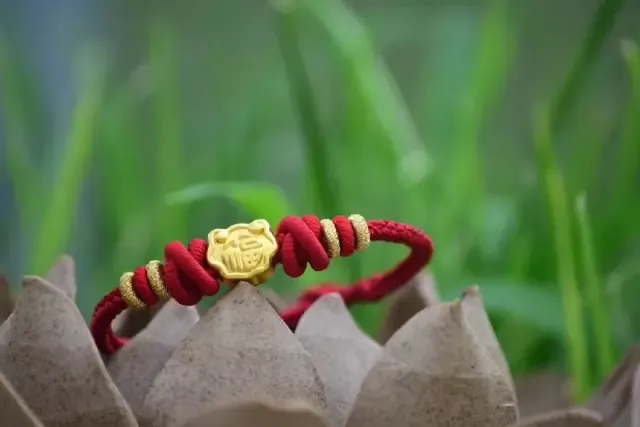What is the meaning of a red string bracelet?
What is a red string bracelet?
The red string bracelet is a special type of bracelet believed to bring good fortune, strength, and faith to the wearer. While its form varies slightly across cultures and regions, it consistently embodies the concept of “carrying emotions or beliefs.”
Regional variations in red string accessories also exist: China often incorporates silver charms, lucky beads, and zodiac pendants; India commonly features the OM symbol and lotus pendants; while the West typically favors plain bands or simple strands with small colored beads. Styles range from delicate individual bracelets to braided pairs designed for couples to share.

Because red strings carry multiple auspicious meanings for life, most wearers hope to enhance their spiritual strength through wearing them, thereby gaining love, good fortune, power, and connection.
The Meaning of Wearing a Red String Bracelet
There is no single definitive answer to the meaning of a red string bracelet. Across different regions and cultures, the red string serves various purposes. Below are the meanings and functions associated with the red string:
Blessings and Protection: This is the most common meaning. Chinese people wear red strings believing they bring good fortune and peace; Hindu devotees wear them on the left wrist, corresponding to the “root chakra,” symbolizing the protection of life force; in Mexico’s Oaxaca region, people tie small bells to red strings, believing they ward off negative energy.
Emotional Bonds: Manifested in both Eastern and Western cultures. Chinese couples often wear matching red strings to symbolize “red string of fate” (red string tying destiny). Western friends exchange red strings to represent “unbreakable bonds,” such as the street-popular “red string of fate” in America, which uses the red string to symbolize a “destiny-bound connection.”
Cultural Symbolism: In certain regions, red strings serve as markers of identity or faith. For instance, the Jewish “red string bracelet” (originating from Kabbalah tradition) worn on the left hand signifies belief in “divine protection.” Within Tibetan culture in China, red strings are often paired with amber and turquoise, functioning both as adornments and expressions of cultural identification with “auspiciousness.”

The Origin and History of Red String Bracelets
As an “accessory imbued with meaning,” the red string traces its origins to multiple ancient civilizations rather than a single source:
Pre-Qin Period in China (c. 1000 BCE): The earliest use of red cords was associated with “shamanic culture.” The Classic of Poetry mentions, “Tying the red cord with care, ninety rites performed,” where “red cord” symbolized “a stable marriage bond” in weddings. This later extended to daily blessings—for instance, Han Dynasty people wore red cords during the Dragon Boat Festival to ward off “the five poisons.”
Ancient Egypt (c. 3000 BCE): Red cords were employed in religious rituals. Archaeological discoveries in pharaohs’ tombs reveal artifacts featuring red cords strung with amulets. People then associated red with “Isis, goddess of life,” believing the cords channeled divine protective power.
Indus Valley Civilization (c. 2600 BCE): Red cords are documented in early Hinduism. The Vedas mention “binding the arm with a red thread for protection.” Priests would tie red cords on devotees, symbolizing “establishing a connection with the divine.” This tradition continues today as a common Hindu blessing ritual.
Later, through cultural exchange, the form of the red string bracelet gradually simplified, evolving from a “religious symbol” into an “everyday accessory.” Yet its core meaning of “blessing and connection” remains unchanged.
